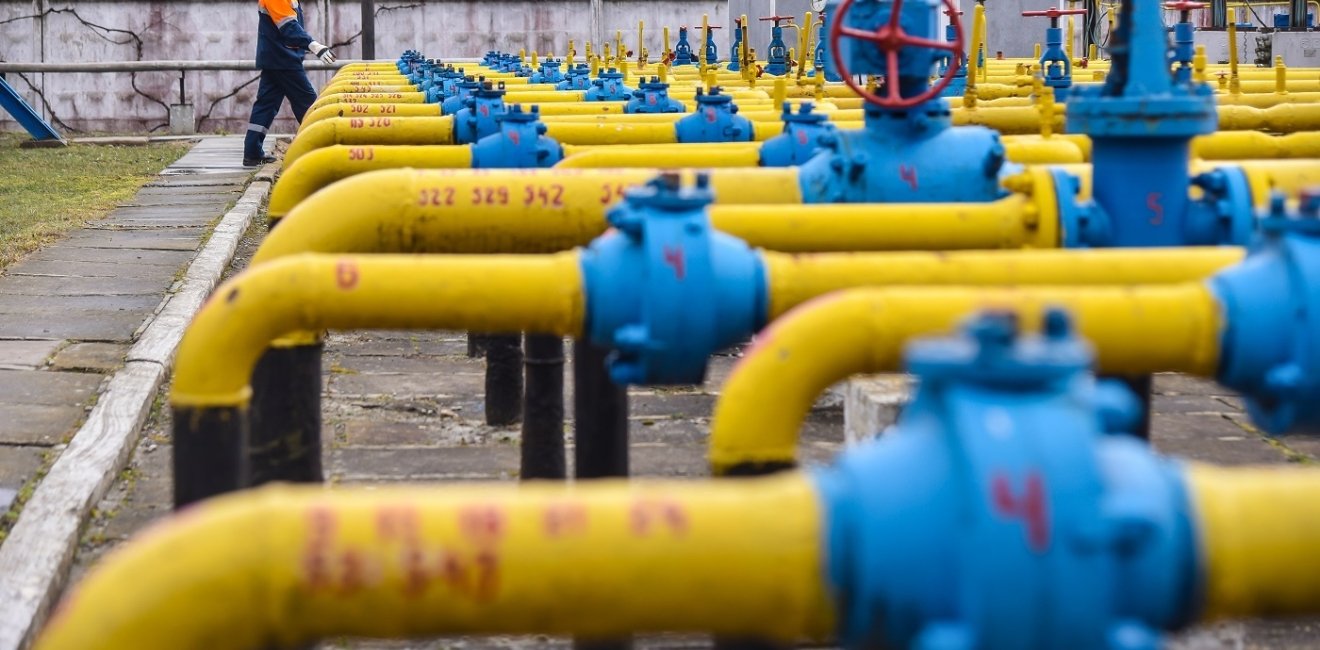
A blog of the Kennan Institute
The energy sector is among the key sectors affected by Russia’s war against Ukraine. The natural gas infrastructure has suffered less to date from the war than the electricity grid and the petrol supply. But it has been affected by regulations that were put in place before the war. In amending policies and regulations to fit wartime conditions, policymakers should keep in mind that the changes they propose should cause less harm to markets in the future.
Ukraine’s History of Incomplete Privatization and Naftogaz’s Unprofitability
When Ukraine became independent in 1991, all property was state-owned, including the plants and infrastructure of the gas sector. In 1998 the government established Naftogaz of Ukraine, uniting most of the natural gas assets and some from the oil sector. During the initial wavering privatization effort, which started in the 1990s and gave rise to the oligarchs, some private players also appeared to handle the gas supply and distribution of some of the former state assets. However, as the gas business was a source of corrupt rent-seeking, the private companies wound up in the hands of the oligarchic strata or elites, and the state-owned Naftogaz itself was unprofitable. The artificially depressed gas prices charged to end-users—at the time, Ukraine did not have a real domestic gas market—contributed to Naftogaz’s losses. Eventually, Naftogaz became a “black hole” in the budget.
That was how things stood in the era of huge state-owned companies charging artificially low prices and mired in unprofitability. Huge companies concentrating different business sectors were good for centralizing money flows and made corrupt rent-seeking easier. During Viktor Yanukovych's administration (2010–2014), for example, the government became known for uniting state-owned companies into big holdings. This concentration of assets aided profiteers.
Enter the Gas Market Law and Market Liberalization
After the Revolution of Dignity, the government decided to change the situation. Parliament adopted a new gas market law oriented toward introducing the European gas market model. Industrial consumers were charged market prices, while households saw prices increase in stages, along with the government’s promise to introduce market prices in the future. In 2016, Naftogaz’s CEO, Andriy Kobolev, said the company would be broken up, and part of the new company split off from the state-owned portion would be privatized, with no further need for Naftogaz to exist as a group of consolidated companies and businesses.
In keeping with what has become Ukrainian tradition, however, the goal of rapid market liberalization faced political obstacles. After partial gas price increases, only in mid-2020, when prices were low across the globe, did the government finally introduce market prices for households. That step was very close to finally establishing real and transparent competition between market players, and the gas market reform seemed to be finalized. However, Naftogaz was the biggest gas producer, controlling 75 percent of the market through its subsidiary, and so became the price-maker. Naftogaz was in no hurry to release gas to other companies by adopting standard bidding principles, as the European Energy Community recommended.
Pricing Flip-Flops and the Start of the War
The liberalized price was not sustained. In early 2021, after a sharp uptick in prices charged households toward matching market prices, the government again regulated prices for households for a few months, and later prices were kept artificially low, which resulted in losses for Naftogaz.
The Russian invasion of 2022 provided another reason to keep utility prices frozen. Because other suppliers no longer had access to relatively cheap gas, Naftogaz turned out to be the only supplier: in mid-2022, the company reported it was serving 98 percent of households.
Naftogaz was also expanding its footprint in other sectors. Before the war, the government had started transferring to Naftogaz management and ownership of some cogeneration power plants that produced electricity and heat.
Even during the war, the government nationalized and transferred to Naftogaz the chain of fueling stations previously owned by the pro-Russian politician Victor Medvedchuk, who had been arrested on a charge of high treason and was later swapped to Russia for Ukrainian prisoners of war. This step was intended to help resolve the fuel crisis that emerged as a result of war and the loss of Russian supplies. But Naftogaz was late out of the gate in launching mitigating efforts, starting these only once the crisis had passed.
Naftogaz wants to go yet further in increasing its role and share in the gas market. Now the company plans to take control of the gas distribution business. A large number of the gas distribution companies have been owned by the Ukrainian oligarch Dmytro Firtash for many years. These companies distribute gas through infrastructure with a complex mix of ownership in each region including state-owned, privately owned, or owned by local communities. Officials from Naftogaz say they know how to manage these assets. But the company’s history holds a different lesson: in 2009, pursuant to government decree, the company had tried to take control of the gas distribution infrastructure, scattered across multiple grids, but failed.
Another issue for Naftogaz is that both businesses it plans to cover in addition—the cogeneration power plants and gas distribution—are unprofitable owing to overregulation and depreciated assets. Unprofitability in turn has caused huge debts on the books of another key gas market actor, the transmission system operator (TSO), which is responsible for gas transportation across the country and its transit to Europe. A former TSO CEO warns that if Naftogaz transfers control over gas distribution to its newly established private subsidiary, these nonpayments will become bad debts, and the TSO may face a very difficult situation. Naftogaz’s CEO reported the company was not going to assume responsibility for these debts.
The TSO appeared as an independent company in late 2019, when Naftogaz was unbundled in accordance with European energy regulation practices. An issue for Naftogaz was that gas transit was an important source of income: in some years, it subsidized some other subsidiary businesses. In 2021 the government ordered the TSO to pay Naftogaz more than a billion dollars as Naftogaz was in deficit because of the cheap gas prices for households.
After the War
After being profitable in 2016–2019, Naftogaz incurred losses in 2020 and 2021. In addition to posting losses, the company was unable to meet the government-mandated one-third increase in gas production during the 2016–2020 period. Instead, gas production fell slightly.
The exigencies of war have driven Ukraine’s energy policy somewhat off course. Naftogaz will not show a profit for 2022–2023, and the company will continue to provide gas at low prices for households. But after the war, in light of Ukraine’s aspirations to join the EU, the country will have to design its energy policy and market to comply with European principles. And having a single company supplying almost the whole sector will affect competition and transparency.
Kyiv would be well advised to draw lessons from the past and the countless problems huge companies in the former socialist republics have faced, including inefficiency and inflexibility, a blurring of profit and loss ledgers, the demand for budget subsidies opening up a huge space for internal manipulations, and low interest rates for investors but huge payouts for corrupt rent-seekers. Naftogaz was the poster child for this sort of structural mess for decades and should not return to its old status in the future. Moreover, the energy market design as it stands now should be reconfigured to meet wartime requirements and demands, but the changes should be as minimal as possible so that the company can resume normal operations quickly after the war’s end.
The opinions expressed in this article are those solely of the author and do not reflect the views of the Kennan Institute.
Author

Director, Energy Program, Ukrainian Institute for the Future

Kennan Institute
After more than 50 years as a vital part of the Wilson Center legacy, the Kennan Institute has become an independent think tank. You can find the current website for the Kennan Institute at kennaninstitute.org. Please look for future announcements about partnership activities between the Wilson Center and the Kennan Institute at Wilson Center Press Room. The Kennan Institute is the premier US center for advanced research on Eurasia and the oldest and largest regional program at the Woodrow Wilson International Center for Scholars. The Kennan Institute is committed to improving American understanding of Russia, Ukraine, Central Asia, the South Caucasus, and the surrounding region through research and exchange. Read more

Explore More in Focus Ukraine
Browse Focus Ukraine
Talking to the Dead to Heal the Living

Ukrainian Issue in Polish Elections


